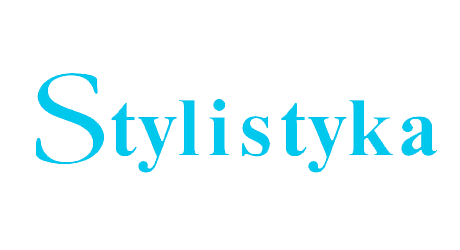Adamski M., 2010, Nowy prototyp genologii, „Teksty Drugie”, 4, s. 197–205, https://rcin.org.pl/Content/49069/WA248_66534_P-I-2524_adamski-nowy.pdf (dostęp:26.01.2023).
Google Scholar
Choczaj M., 2011, O adaptacji, ekranizacji, przekładzie intersemiotycznym i innych zmartwieniach teorii literatury, filmu i mediów, „Przestrzenie Teorii”, 16, s. 11–39, http://cejsh.icm.edu.pl/cejsh/element/bwmeta1.element.ojs-doi-10_14746_pt_2011_16_1 (dostęp: 26.01.2023).
Google Scholar
Dybciak K., 1981, Personalistyczna krytyka literacka. Teoria i opis nurtu z lat trzydziestych, Wrocław–Warszawa–Kraków–Gdańsk–Łódź: Zakład Narodowy im. Ossolińskich, Wydawnictwo Polskiej Akademii Nauk.
Google Scholar
Filip G., 2013, Mistrzowie gry na argumenty. Kałużyński, Treugutt, Bieńkowski, Rzeszów: Wydawnictwo Uniwersytetu Rzeszowskiego.
Google Scholar
Gajda S., 1990, Wprowadzenie do teorii terminu, Opole: Wyższa Szkoła Pedagogiczna im. Powstańców Śląskich w Opolu.
Google Scholar
Gierszewska B., 1995, Czasopiśmiennictwo filmowe w Polsce do roku 1939, Kielce: Wydawnictwo Wyższej Szkoły Pedagogicznej im. Jana Kochanowskiego.
Google Scholar
Gierszewska B., 2013, O piśmiennictwie filmowym w Polsce do roku 1939. – Polskie piśmiennictwo filmowe, red. P. Zwierzchowski, B. Giza, Bydgoszcz: Wydawnictwo Uniwersytetu Kazimierza Wielkiego, s. 51–69.
Google Scholar
Gołębiewska M., 2017, Koncepcje metafory i metaforyzacji a pojęcie – komentarz do stanu badań, „Studia nad Strukturą i Rozwojem Pojęć Filozoficznych”, 29/2, s. 25–49, https://repozytorium.uwb.edu.pl/jspui/bitstream/11320/6888/1/Idea_29_2_2017_M_Golebiewska_Koncepcje_metafory_i_metaforyzacji_a_pojecie.pdf (dostęp: 26.01.2023).
Google Scholar
Guzik M., 2016, Recenzja filmowa jako gatunek dziennikarski, praca wykonana pod kierunkiem dr. Łukasza Szurmińskiego w Instytucie Dziennikarstwa Wydziału Dziennikarstwa i Nauk Politycznych Uniwersytetu Warszawskiego, https://www.
Google Scholar
academia.edu/33687883/Mateusz_Guzik_Recenzja_filmowa_jako_gatunek_dziennikarski (dostęp: 26.01.2023).
Google Scholar
Helman A., 1991, Słownik pojęć filmowych, t. 1: Język, znak, denotacja – konotacja, identyfikajca, Wrocław: Wydawnictwo „Wiedza o Kulturze”.
Google Scholar
Hendrykowski M., 1994, Słownik terminów filmowych, Poznań: Wydawnictwo ARS NOVA.
Google Scholar
Jarosz B., 2018, O (nie)tożsamości pojęć JĘZYK SPECJALISTYCZNY, JĘZYK SPECJALNY, JĘZYK FACHOWY, JĘZYK PROFESJONALNY, JĘZYK ZAWODOWY, PROFESJOLEKT, TECHNOLEKT, „Polonica”, 38(1), s. 85–108, https://doi.org/10.17651/POLON.38.12.
Google Scholar
Krauz M., 2004, Recenzja – gatunek naukowy, krytycznoliteracki czy publicystyczny. – Wielojęzyczność w perspektywie stylistyki i poetyki, red. M. Ruszkowski, Kielce: Wydawnictwo Akademii Świętokrzyskiej, s. 135–151.
Google Scholar
Krauz M., 2015, Krytyka, wartościowanie, ocena – granice recenzji publicystycznej. – Gatunki mowy i ich ewolucja, t. V: Gatunek a granice, red. D. Ostaszewska i J. Przyklenk, Katowice: Wydawnictwo Uniwersytetu Śląskiego, s. 290–303.
Google Scholar
Pietrzak M., 2014, Recenzja i felieton na tle przemian prasy polskiej. Kilka uwag z ewolucji gatunku, „Rozprawy Komisji Językowej ŁTN”, LX, s. 251–262.
Google Scholar
Plisiecki J., 2012, Film i sztuki tradycyjne, Lublin: Wydawnictwo Uniwersytetu Marii Curie-Skłodowskiej.
Google Scholar
Płażewski J., 2008, Język filmu, Warszawa: Książka i Wiedza.
Google Scholar
Racięski B., 2010, Krytyka krytyka, „ArtPapier”, 21(165), http://artpapier.com/index.php?page=artykul&wydanie=117&artykul=2643 (dostęp: 26.01.2023).
Google Scholar
Szulik W., 2018, „Byłem raz w kinie…” – Karol Irzykowski wobec kina popularnego, „Teksty Drugie”, 5, s. 212–229, https://rcin.org.pl/Content/119741/PDF/WA248_148288_P-I-2524_szulik-bylem_o.pdf (dostęp: 26.01.2023).
Google Scholar
Wasilewska D., 2020, W poszukiwaniu nowoczesnego języka krytycznego. Sztuka awangardowa w ujęciu Stefanii Zahorskiej, „Acta Universitatis Lodziensis. Folia Philosophica, Ethica – Aesthetica – Practica”, 23, s. 11–30, https://doi.org/10.18778/0208-6107.35.02 (dostęp: 26.01.2023).
Google Scholar
Witosz B., 2005, Genologia lingwistyczna. Zarys problematyki, Katowice: Wydawnictwo Uniwersytetu Śląskiego.
Google Scholar
Wojtak M., 2010, Głosy z teraźniejszości. O języku współczesnej polskiej prasy, Lublin: Wydawnictwo WSPA.
Google Scholar
Woźniak E., 2020, Przełomowe dwudziestolecie. Lata 1918–1939 w dziejach języka polskiego, Łódź: Wydawnictwo Uniwersytetu Łódzkiego.
Google Scholar


 https://doi.org/10.25167/Stylistyka34.2024.12
https://doi.org/10.25167/Stylistyka34.2024.12
